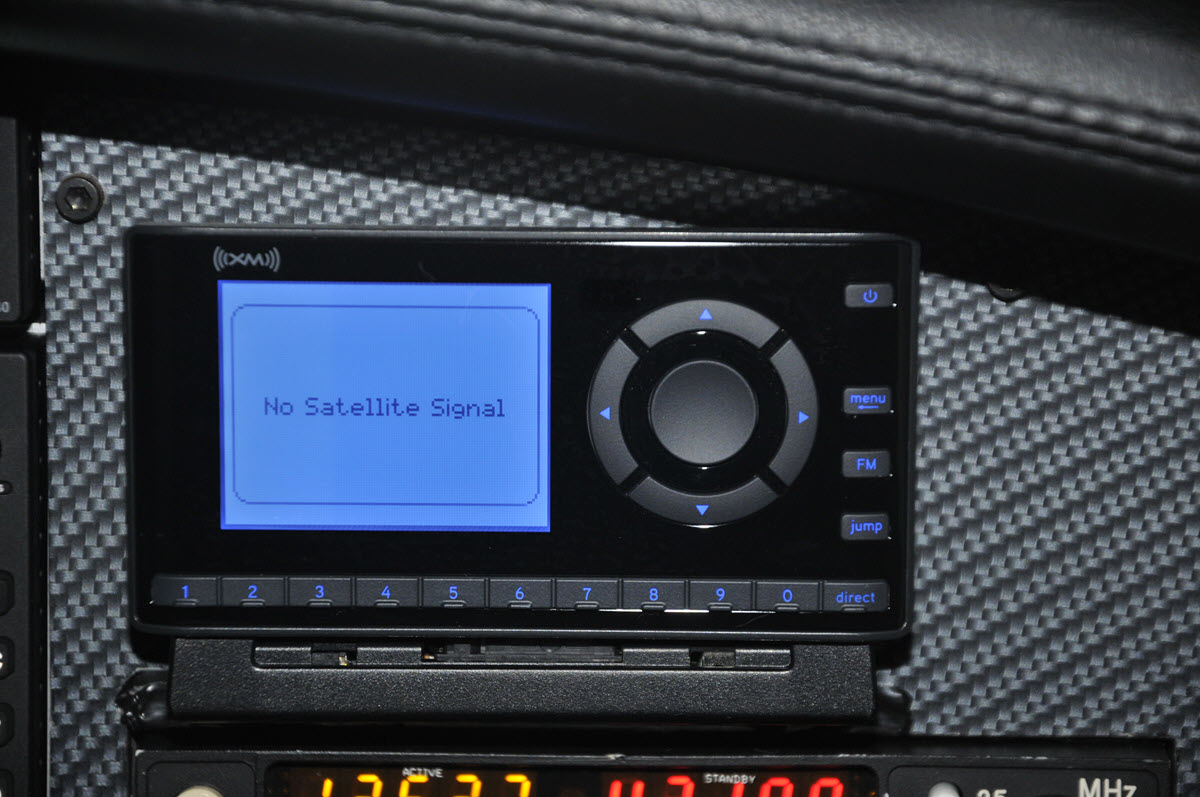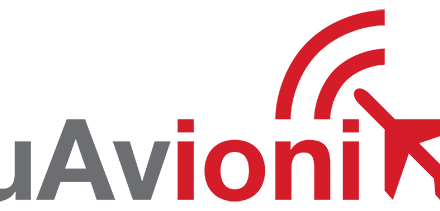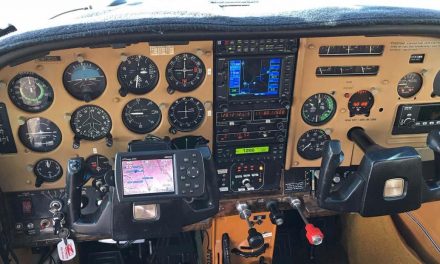 By Bob Hart – www.AvionixHelp.com
By Bob Hart – www.AvionixHelp.com
This article was written in 2015
In 2009, the FAA started implementation of NextGen, a massive overhaul of the national airspace system. However, the foundation for NextGen and the use of ADS-B (Automatic Dependent Surveillance Broadcast) had already been in service for nearly ten years with the advent of the Capstone Program in Alaska.
In the late ‘90s, Alaska remained a wilderness with a poor road infrastructure. Villages were scattered about with few connecting roads making aviation the only fast way to travel between them. One in 58 Alaskans were pilots and small aircraft were abundant as compared to the lower 48. However, the terrain and ever changing weather conditions resulted in an aircraft accident every day and a fatal crash every nine days!
Controlled flight into terrain (CFIT) was an all too common occurrence as pilots (flying VFR) would unknowingly head out as bad weather moved in. A poor IFR infrastructure, most of which was dependent on ground-based equipment not conducive to the mountainous terrain, only compounded the issue.
The FAA saw this as an opportunity to test new technologies with an emphasis on GPS and satellite based navigation equipment and terrain avoidance; thus, the first ADS-B towers were built. General Aviation safety in Alaska improved and the result was the birth of NextGen. Simply stated, NextGen’s primary goal is to transform America’s ground based air traffic control system to a satellite based system with ADS-B as its heart. At this point, the FAA has completed the installation of ADS-B ground equipment throughout the country and it’s now up to aircraft owners to equip.
The FAA has certainly mandated equipage to aircraft owners through the years, but corporate and turbine owners have more often been the target. However, the mandate to add ADS-B “Out” technology by 2020 is the first significant investment dictated to General Aviation in many years and it has many pilots scrambling. Worse yet, there’s significant talk from some pilots, specifically those who fly for fun, that when January 1, 2020 comes along, they’ll simply “hang it up” and walk away. There’s no question that flying for fun has become expensive, but the ADS-B mandate may be the last straw for many such pilots. I can’t tell you what this would do to already plummeting legacy aircraft values—especially if it happens in droves!
As of the middle of 2014, it was estimated that about 150,000 aircraft will still need to be equipped for ADS-B “Out.” Active IFR pilots and those with more sophisticated aircraft (frequently used for business) are typically the first to jump into new avionics technology, so it’s safe to say that this group represents the bulk of those planes already equipped. Most such aircraft were already equipped with an IFR WAAS corrected GPS so the addition of Mode S or a UAT is not a big deal. However, for the pilot flying a legacy Cherokee or Skyhawk in VFR conditions, the need to add ADS-B “Out” equipment and provide a certified WAAS GPS source is a much bigger deal and this investment represents a much larger percentage of their aircraft’s value. Of course, the other problem is that ADS-B “In” is where the real features and benefits of ADS-B lie (especially for IFR pilots), and the VFR crowd isn’t all that interested in paying for that. Frankly, they’ll pay for ADS-B “Out,” but won’t get a whole lot back from the investment.
We’ll review the options available today to meet and exceed the looming ADS-B mandate, but first, let’s take a look at the mandate itself.
Remember, the requirement is for ADS-B “Out” only. There are essentially two ways to accomplish this in a certified aircraft: a Mode S Transponder with Extended Squitter OR a Universal Access Transceiver (UAT).
Mode S Transponder with Extended Squitter
You might ask, “What’s extended squitter?” For that matter, what the heck is a squit? To answer that question, Garmin’s ADS-B Academy offers the following:
“To greatly oversimplify the terminology, a “squawk” is a response a transponder makes to an ATC interrogation, while a “squit” is a transmission format that routinely sends aircraft ID and positional information without being interrogated. By reducing the need for back-and-forth interrogation/response over the air, the Mode S squitter works to minimize transmitted “chatter” in the system — and, thus, increase its target-handling capacity.” (Thanks Garmin!)
All Mode S transponders transmit on 1090 MHz. Old-style Mode S transponders provided standard functions while also squitting basic aircraft information that was pre-programmed into the transponder itself. New Mode S transponders with extended squitter are interfaced to a certified GPS for position information and squit a lot more information about not only the aircraft ID, but also (thanks to the GPS link) what the aircraft is doing right now. This includes current position altitude and velocity – both vertical and horizontal. This gives ATC a lot more information and, in most cases, information that is more accurate than the current radar systems.
If you fly internationally OR in the U.S. above 18,000 feet, you are required to have a Mode S ES transponder operating on 1090 MHz. Aircraft flying below that can also use the Mode S transponder option to meet the ADS-B “Out” requirement, but they must have a certified position source. If you already have a WAAS GPS navigator in your aircraft, you should be golden, but watch out: not all ADS-B solutions and GPSs are compatible in the eyes of the FAA. Make sure before you buy!
As I mentioned earlier, if you’re flying IFR on a regular basis, you likely already have a certified GPS source and you can add a Mode S ES transponder to your aircraft for as little as $3500 installed. As of this writing, the Trig TT31, from the U.K. and the Bendix-King KT-74 (made by Trig!) appear to be the value leaders on a Mode S ES ADS-B approved transponder. (Note: If you’re still flying behind the older KT-76A transponder, both of these units are a direct replacement and require no installation).
Universal Access Transceiver (UAT)
The key word here is “transceiver.” Unlike the Mode S ES transponder, the UAT transmits ADS-B “Out,” but also receives ADS-B “In” on 978 MHz. These units meet the requirement for ADS-B “Out” while also offering the abundant benefits of ADS-B “In.” You’ll find UATs available in either single or dual band units. Single band units operate on 978 MHz (in and out) and get information about 1090 MHz equipped aircraft through a re-broadcast (usually every 5-10 seconds). On the other hand, dual band units transmit on 978 MHz, but receive on both 978 and 1090 MHz, so information from 1090 equipped aircraft is direct without the need for re-broadcast. This means you may get critical traffic information a little faster. You may be thinking that many 1090 MHz equipped aircraft are “way up there,” but when you’re around an airport environment you are sharing airspace with them and they’re likely moving a little faster than you! It’s a consideration.
So if you don’t fly above 18K, the UAT meets the ADS-B mandate. However, here’s where the benefits really begin—especially for IFR pilots. Frankly, every pilot wants to increase their situation awareness. ADS-B provides this information with access to traffic information and updated weather—subscription free! The caveat, however, is that you must have something to display it on. (Note: Most UATs work with a standard Mode A/C transponder so there’s no need to upgrade.)
Well-equipped IFR platforms frequently provide a display in the form of either an MFD or a large format navigator like Garmin’s GNS-530W and GTN-750, Avidyne’s IFD-540 or Bendix King’s KNS-770. The good news is that VFR or “light” IFR pilots (or pilots with “light” budgets) can have this capability affordably. We’ll talk about that a little later.
It is generally thought that a UAT will cost you more money to add; after all, you’re getting both ADS-B “Out” and “In.” However, that’s not always the case. If you need to add ADS-B “Out” capability and need to purchase a certified GPS position source, a UAT with built-in certified GPS is a cheaper option by today’s standards.
Below is a breakdown of what I’d consider the primary categories of GA pilots/aircraft, along with some proposed solutions that make sense for each. As we go through them, consider which group best fits you and your needs.
Group A: Pilots in sophisticated aircraft capable of 18K+ altitudes.
It should be obvious that these pilots must have ADS-B equipment on 1090 MHZ or, in other words, a Mode S ES Transponder. Some pilots will also go for ADS-B “In” as well. There are a few ways to accomplish this. You can add a UAT, but that seems unnecessary and is the more expensive route. If so equipped with big navigators and MFDs (as they often are), these pilots can simply add a remote ADS-B receiver that is both legal to install and will display on their certified avionics. This will get ADS-B traffic and weather.
Then again, many of these aircraft already have active traffic and subscription weather onboard so these pilots may want to stay right where they are. Personally, I think “active” traffic is better; and, frankly, your subscription weather may be more reliable. Why? Unlike XM or WSI, which are satellite based, FIS-B information, including weather and flight information (TFRs etc.), is ground based. Yeah, it’s free, but will you see it before you take off? Or, will you lose it in terrain? Let’s face it, the ground based weather options that were available before WSI and XM had issues. TIS-B is the same and may not always be there when you need it. The good news is that TIS-B is designed to work in conjunction with active traffic, so you may have the best of both worlds with active traffic and ADS-B in on-board. If push comes to shove, I’d bet on active.
Group B: Pilots flying IFR platforms below 18k with reasonable equipment.
By “reasonable” equipment, I’m suggesting that they have already installed or upgraded to a WAAS GPS or plan to. The way they fly practically dictates WAAS in the future, so I don’t see that as an ADS-B upgrade.
These pilots would be adding WAAS in the future even if ADS-B was not an issue. Some of these pilots will have MFDs or navigators with screens big enough to display ADS-B traffic and weather. In my opinion, a GNS-430W, GTN-650, or IFD-440 is not suited for this. If you have a certified display large enough for additional information, a UAT is a pretty good option here—provided you have a reasonably reliable transponder onboard. You’ll have the benefits of ADS-B weather and traffic right in front of you on your certified avionics.
As of now, the Garmin GDL-88 has been the best-selling UAT, but other players, like NavWorx, are also in the game. Others will surely follow. Many pilots are holding off on an ADS-B investment hoping for a cheaper solution; and, in my opinion, the broadest market for ADS-B equipment is the UAT. If there is to be a price war on ADS-B equipment, it will be through the UAT—especially those with built-in GPS. This category and the next will be where the most money will be spent on ADS-B equipment!
For pilots in this category without a suitable certified display, there is another option and Garmin has just responded to it with the introduction of the GDL-84. Hopefully, you read my recent article on Connectivity (see page 10 of the December 2014 edition). If not, the concept is simple: Many pilots are adding tablet PCs to their cockpit and (through WiFi or Bluetooth) incorporating this “smart” technology into their navigation tools. The IPAD or a suitable Android tablet is a great way to display ADS-B weather and traffic and bypass the expense of an MFD. Many pilots in this category will buy ADS-B “Out” (with either Mode S or a UAT) and wirelessly feed their tablets with ADS-B “In” information—either from a certified source like a UAT or from any of the many non-certified ADS-B receivers on the market.
Group C: “Light” IFR or VFR pilots in moderately equipped airplanes.
The benefits of ADS-B “Out” are enhanced traffic separation and (hopefully) a reduced risk of two airplanes sharing the same space. With more accurate aircraft position from WAAS GPS (versus radar), the FAA expects separation between aircraft can be reduced, thus making room for more aircraft in the system. The “system” we’re talking about is primarily the IFR system. However, most pilots in the “light” IFR category only use the ticket to “get out of trouble.” Simply stated, most of these pilots spend little or no time in the IFR system, so they’d get very little personal return from their investment in ADS-B “Out.”
Few “light” IFR pilots will fly into “trouble” with their limited instrument experience. Their aircraft is moderately equipped for IFR flying; and, if they have an IFR GPS on board, it’s usually a second-generation unit with no WAAS and no WAAS upgrade path. VFR pilots, by nature of the ticket, depend on “see and avoid” for traffic avoidance. Their flights are shorter and their weather awareness comes mostly from a check of the weather before they take off. There’s no question that many pilots in this category can benefit from ADS-B “In,” but the nature of their flying (frequently in “legacy” aircraft) often pushes ADS-B “In” off their budget. These are the pilots most affected by the ADS-B mandate. They have no WAAS position source, so they’ll have to buy a device that provides ADS-B “Out.” Plus, they’ll also need to buy a certified GPS (typically a remote unit). These pilots not only don’t have the budget for a GNS-430W, but spending $10,000 to install one isn’t a good investment in an aircraft that is currently worth $40K…and depreciating! These are the pilots and aircraft owners who are either waiting for that perfect, cheap solution to ADS-B or the ones who see the mandate as the end of their aircraft ownership.
The Mode S ES transponder makes no sense for most in this situation. However, if their KT-76A transponder is failing and they’re in the market for a new transponder, a solid-state, Mode S ES unit (like the KT-74 or Trig TT31) makes the most sense and they can buy and install an ADS-B approved Mode S transponder for a little more than a new solid-state A/C unit (like the Garmin GTX-327). Of course, they’ll still have to find an affordable WAAS GPS position source; and, in today’s market, that’ll cost them around $3000 (plus installation). NOTE: Just as I was submitting this article, I learned of a new option in the works: a Mode S ES transponder with built-in GPS. I know of one manufacturer who is working on one; and it would be logical to assume others are doing the same. Of course, the big question will be cost. If the price approaches that of a UAT, then the extra features of the UAT will probably still make a UAT the way to go.
For owners in this category who have a good, reliable Mode A/C transponder, a UAT may actually be the best option. With a UAT, you’re buying both ADS-B “Out” and “In” capability, so it may seem to go against common sense. However, as I mentioned, this is going to be the most competitive market for ADS-B. If you plan to use an affordable display option (like an IPAD or Android) the total investment may actually be less expensive; plus, you’ll get more. VFR pilots have been depending on their portable GPS units for navigation for some time now. As a result, a panel mount GPS no longer makes a lot of sense for VFR flying (unless you have an autopilot and want to couple to it). An IPAD/Android with good, affordable navigation software is, in my opinion, a better solution (see my article in the December 2014 edition).
Group D: The aircraft owner who plans to ignore ADS-B.
Like I mentioned, there’s talk among aircraft owners that some will either ignore ADS-B or, essentially, abandon flying altogether. So, what’s in store for them? The answer is simple: Anywhere you fly today that requires a Mode A/C transponder will be off-limits to any aircraft not equipped with ADS-B “Out” technology after January 1, 2020.
According to AOPA, the following areas will mandate the operation of a Mode C transponder:
- Operations within Class A, Class B, and Class C airspace.
- Operations within 30 nautical miles of the primary airport within Class B airspace from the surface to 10,000 feet MSL.
- Operations above the ceiling and within the lateral boundaries of Class B and C airspace.
- Operations above 10,000 feet MSL in the contiguous 48 states, excluding the airspace at and below 2,500 feet AGL.
- The AIM states in Section 4-1-19(a)(3) that for airborne operations in Class G airspace, the transponder should be operating unless otherwise requested by ATC.
For some, one potential bright spot is that aircraft not originally certified (or since modified) with an engine-driven electrical system are the exception. This should mean a big boost in value to the Piper Cub crowd! In 1992, I had a Corben Baby Ace (an open cockpit Experimental) in addition to my Cherokee Six. I was flying it in Maine (away from all the above-mentioned airspace) with nothing but a handheld comm, goggles, and a scarf. It was a blast! The point is that there will still be places to enjoy flying in its most basic form without ADS-B, but you’ll have to learn how to “prop” an airplane!
For those who do see this as the end of their aircraft ownership, many will likely fly right up until the end of 2019 and then try to unload their aircraft for whatever they can get. Either this will further hurt the already declining legacy aircraft market or, who knows—it may actually help! After all, there will suddenly be a lot of great deals on otherwise good airplanes.
Conclusion: The transformation of ATC from radar to satellite based makes a lot of sense, especially for those who are frequent participants in the system. For low altitude flyers who avoid the IFR system as best they can, it doesn’t. AOPA has tried to be a voice for these pilots, but the FAA insists that they participate. Moving forward, the UAT market will be competitive, but we’ve yet to see if and when that “cheap” ADS-B solution will come along. As of this writing, L-3 Communications teased us with their new “Lynx” ADS-B solution which promises a low-cost, single-box solution starting at under $2000, while other companies like Avidyne, Bendix-King, and Sandel have yet to show their hand.
Of course, the manufacturers will attempt to scare you into thinking that now is the time to invest in ADS-B. I’ve heard these kinds of statements with previous mandates, but their predicted “bottlenecks at the install facilities” and “shortages of equipment” never developed. Personally, I think there’s still more time, and new products and (hopefully) better pricing is likely. Then again, this is a much bigger mandate and it covers a lot more airplanes, so don’t wait too long. ADS-B is a reality and I don’t expect the FAA to move the mandate date. If you understand your ADS-B options and keep your eye out for the right “deal” when it arrives, you should be able to equip your aircraft to meet the mandate without draining your bank account.
Next time, we’ll review some of the ADS-B products that are now available from numerous manufacturers and give you a sense for what they will cost. If you’re considering an investment in ADS-B in 2015, we’ll give you a good idea of what it’ll take to make it happen.
Until next time…Happy and Safe Flying!





